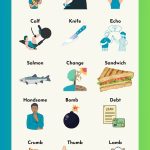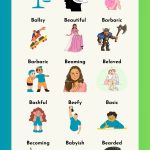If you’re looking for information about the different types of adverbs, you’re certainly in the right place. We’re going to give you a rundown on the various kinds of adverbs with examples. Keep on reading for everything you need to know about different types of adverbs, along with adverbs examples for each one.
Adverb Definition
What is an adverb? An adverb is a word that describes other words like a verb, an adjective, another adverb, or a clause. A lot of adverbs end in the ‘-ly’ form. For example, badly, fortunately, quickly, and really are some adverbs that end in the -ly form. However, there are also adverbs that do not end in -ly like too, very, nevertheless, inside, and outside.
Types of Adverbs
There are mainly 5 types of adverbs.
- degree
- manner
- place
- time
- frequency

Different Types of Adverbs
Types of Adverbs with Examples
Let’s get into the five different types of adverbs, including examples of adverbs.
Adverbs of Degree Meaning
An adverb of degree gives information about the intensity of the verb in a sentence. They talk about “how much” or, “what degree.” Besides modifying verbs, they can also modify adjectives and other adverbs. In a sentence, you can find them before the word that they modify.
In terms of degree, they can be categorized as:
- low (somewhat, hardly, barely)
- medium (fairly, enough)
- high (extremely, too)
Adverbs of Degree Examples
- This report is barely good enough to hand in.
- The food has been fairly distributed.
- It’s extremely hot outside today.
- Mr. Kim gives very difficult assignments.
Adverbs of Manner Meaning
An adverb of manner gives information about how, or in what manner something is done. They generally modify verbs and you can often find them at the end of the clause.
They are the most plentiful kinds of adverbs and end in “ly.” Some examples include:
- generously
- happily
- quickly
- softly
- slowly
- patiently
- well
- angrily
Adverbs of Manner Examples
- He wrote out the invitations neatly.
- I walked to the bus stop quickly because I didn’t want to miss it.
- He patiently helped me with my homework.
Find out more here: Adverb of Manner.
Adverbs of Place Meaning
An adverb of place gives information about where the verb takes place. You can usually find them after the main verb or the direct object. Among the types of adverbs, place ones are among the first that beginners learn.
Some of the most commonly used ones are:
- above
- below
- in
- on
- out
- there
- outside
- here
- everywhere
- above
Adverbs of Place Examples
- In Seoul, you can see street vendors everywhere.
- He is below me in the standings.
- Let’s go outside.

Adverb Examples for ESL Learning
Adverbs of Time Meaning
An adverb of time gives information about when the verb took place. You can find them at the beginning or end of a sentence. Some of the most common adverb types are:
- daily
- weekly
- monthly
- annually/yearly
- tomorrow
- yesterday
- lately
- recently
Adverbs of Time Examples:
- Please fill out a daily time report.
- They recently moved to Busan.
- Tomorrow, we’re going to visit my grandmother.
Adverbs of Frequency Meaning
An adverb of frequency talks about how often something occurs and it usually modifies a verb. You can usually find them before the main verb. Some common ones include:
- again
- always
- never
- sometimes
- usually
- often
- rarely
Adverbs of Frequency Examples
- I always drink coffee in the morning.
- We often grab a beer with all our coworkers on Friday nights.
- I never eat deep-fried food.
Identifying Types of Adverbs Test
Now you know what an adverb is and the different types of adverbs. Review your learning by completing this short adverb quiz. Read each sentence and figure out which type of adverb it is.
Types of Adverbs Quiz:
- I could hardly read what the teacher wrote on the whiteboard.
- My family often goes to a Korean BBQ restaurant.
- I forgot to tell you that I left the keys on the table.
- All employees must attend the monthly meeting.
- I get frustrated when someone speaks slowly.
- Winter in Canada is extremely cold.
- Our teacher happily showed her engagement ring.
- I never drink americano.
- I recently moved here.
- She was very disappointed with her exam grade.
Answers:
- Adverb of degree
- Adverb of manner
- Adverb of place
- Adverb of time
- Adverb of manner
- Adverb of degree
- Adverb of manner
- Adverb of frequency
- Adverb of time
- Adverb of degree
Did you Like Learning about the Different Types of Adverbs?
- Amazon Kindle Edition
- Bolen, Jackie (Author)
- English (Publication Language)
- 142 Pages - 11/22/2020 (Publication Date)
Yes? Then you’re going to love this book on Amazon: 1001 English Expressions and Phrases. Learn how native English speakers actually talk! Pick up some expressions, idioms and phrases to use in real life.
You can find the book in a variety of formats. Keep a copy on the bookshelf in your office to use as a handy reference guide. Or, take the digital version with you to your favourite coffee shop. Finally, listen to the audio version while commuting to work or school.
Whatever the case, get ready to level up your English vocabulary and have more confidence when speaking! Check out the book for yourself:
FAQs About the Different Types of Adverbs
There are a number of common questions that people have about adverb types. Here are the answers to some of the most popular ones.
What are the 7 types of adverbs?
The 7 types of adverbs are:
- Interrogative.
- Relative.
- Simple.
- Focusing.
- Signaling Attitude.
- Evaluation.
- Conjunctive.
What are the 5 types of adverbs?
The 5 types of adverbs are:
- Degree.
- Frequency.
- Manner.
- Place.
- Time.
How many types of adverbs are there?
Depending on how you divide the adverbs, you can divide them into 5 types or 7 types. Largely there are 5 types of adverbs: degree, frequency, manner, place, and time.
How do you identify an adverb in a sentence?
An adverb is a word that modifies a verb or a whole sentence. To identify them in a sentence, they often end in -ly but some look the same as the adjective (fast).
How do you explain adverbs to ESL?
The easiest way to explain adverbs is to say that it is a word that describes (modifies) other words. The types of words that adverbs can describe are verbs, adjectives, other adverbs, or even whole sentences. Also, give some examples.
Some examples of adverbs:
- quickly
- slowly
- yesterday
- next week
- outside
- inside
- rarely
- daily
- weekly
- monthly
What type of word is very?
Very is a type of degree adverb. For example, you can say something like this: I have a very tall tree in my front yard. In this sentence, very is modifying the adjective ‘tall’.
Different Types of Adverbs: Join the Conversation
Do you have any thoughts about the different adverb types? Were the adverb examples helpful? Leave a comment below and let us know what you think about it. We’d love to hear from you.
Also, be sure to give this article a share on Facebook, Pinterest, or Twitter. It’ll help other English learners like yourself find this useful resource.
If you’re a teacher looking for some ideas for teaching them, have a look here: ESL Adverb of Frequency Activities.

Adverb Types for English Students
Last update on 2024-04-25 / Affiliate links / Images from Amazon Product Advertising API







Leave a Reply